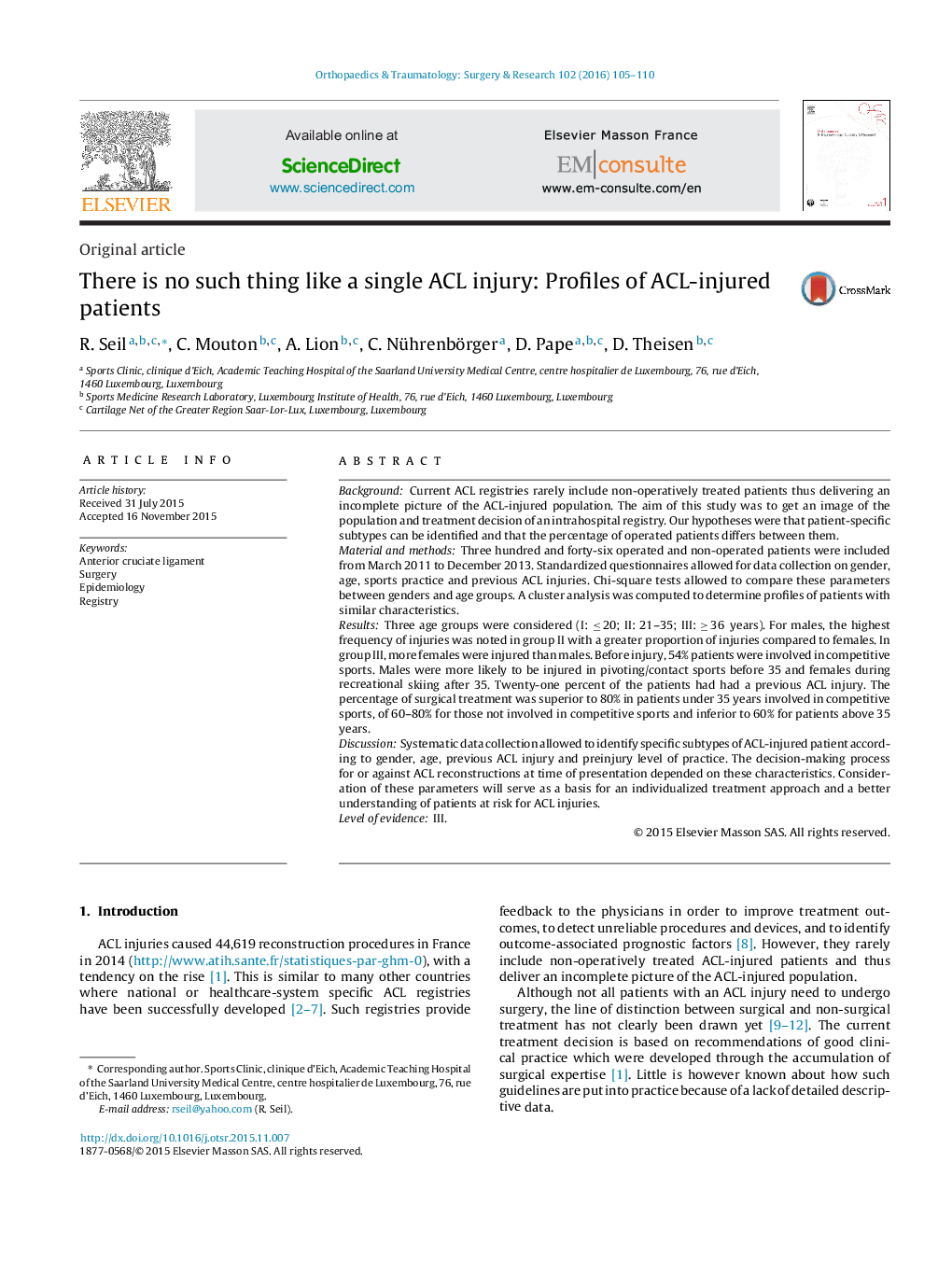| Article ID | Journal | Published Year | Pages | File Type |
|---|---|---|---|---|
| 4080953 | Orthopaedics & Traumatology: Surgery & Research | 2016 | 6 Pages |
BackgroundCurrent ACL registries rarely include non-operatively treated patients thus delivering an incomplete picture of the ACL-injured population. The aim of this study was to get an image of the population and treatment decision of an intrahospital registry. Our hypotheses were that patient-specific subtypes can be identified and that the percentage of operated patients differs between them.Material and methodsThree hundred and forty-six operated and non-operated patients were included from March 2011 to December 2013. Standardized questionnaires allowed for data collection on gender, age, sports practice and previous ACL injuries. Chi-square tests allowed to compare these parameters between genders and age groups. A cluster analysis was computed to determine profiles of patients with similar characteristics.ResultsThree age groups were considered (I: ≤ 20; II: 21–35; III: ≥ 36 years). For males, the highest frequency of injuries was noted in group II with a greater proportion of injuries compared to females. In group III, more females were injured than males. Before injury, 54% patients were involved in competitive sports. Males were more likely to be injured in pivoting/contact sports before 35 and females during recreational skiing after 35. Twenty-one percent of the patients had had a previous ACL injury. The percentage of surgical treatment was superior to 80% in patients under 35 years involved in competitive sports, of 60–80% for those not involved in competitive sports and inferior to 60% for patients above 35 years.DiscussionSystematic data collection allowed to identify specific subtypes of ACL-injured patient according to gender, age, previous ACL injury and preinjury level of practice. The decision-making process for or against ACL reconstructions at time of presentation depended on these characteristics. Consideration of these parameters will serve as a basis for an individualized treatment approach and a better understanding of patients at risk for ACL injuries.Level of evidenceIII.
